The Correlation between GDP PPP Per Capita and GDP PPP Per Area in South America
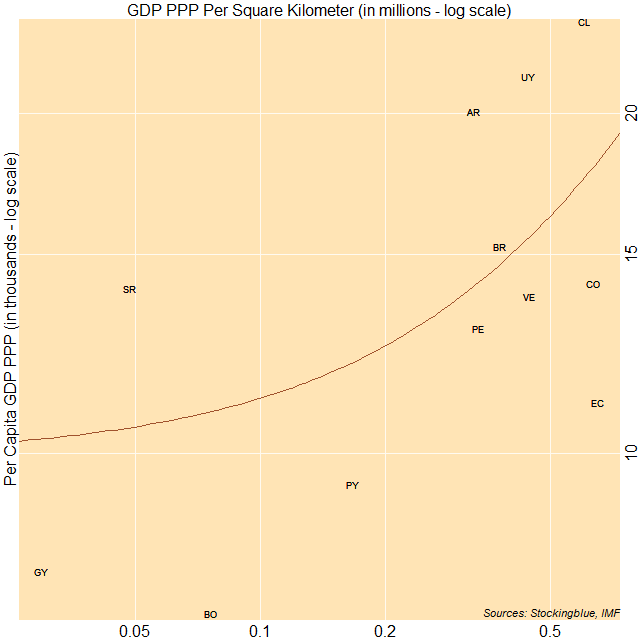
The correlation between per capita gross domestic product based on purchasing power parity (GDP PPP) and GDP PPP per area in South America is moderately strong. The three largest economies on a per capita basis have either a moderate or high per area GDP relative to other countries on the continent.
Gross Domestic Product by Arable Land in South America
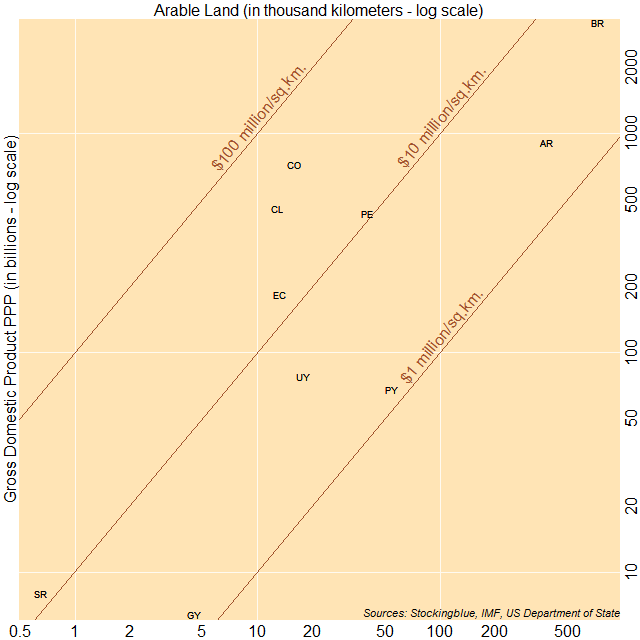
The chart above shows economic output as it relates to arable land. The countries to the top left have a larger ratio of gross domestic product (GDP) to arable land, while countries to the bottom right have a smaller ratio of GDP to arable land. Colombia, Chile, and Ecuador have the largest ratio of GDP to area whereas Argentina, Paraguay, and Guyana have the smallest ratio of GDP to area.
Gross Domestic Product by Land Area in South America
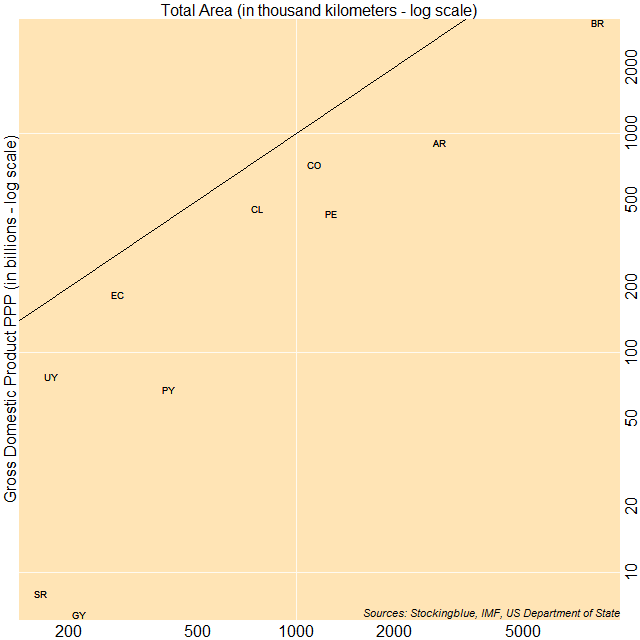
The chart above shows economic output as it relates to land area. The countries to the top left of the diagonal line have a gross domestic product (GDP) of over one million international dollars per square kilometer, while countries to the bottom right have a GDP that is less than one million dollars per square kilometer. Ecuador, Colombia, and Chile have the largest ratio of GDP to area whereas Paraguay, Suriname, and Guyana have the smallest ratio of GDP to area.
The Correlation between Minimum Wage and Shadow Economies in South America
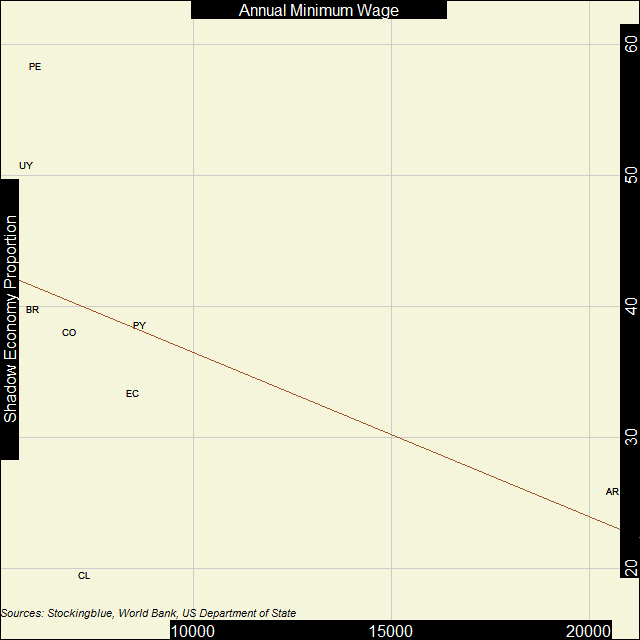
In South America, the inverse correlation between the strength of the shadow economy and the minimum wage is pretty weak. There is no real relationship between the strength of the shadow economy and minimum wage.
The Correlation between Minimum Wage and Economic Strength in South America
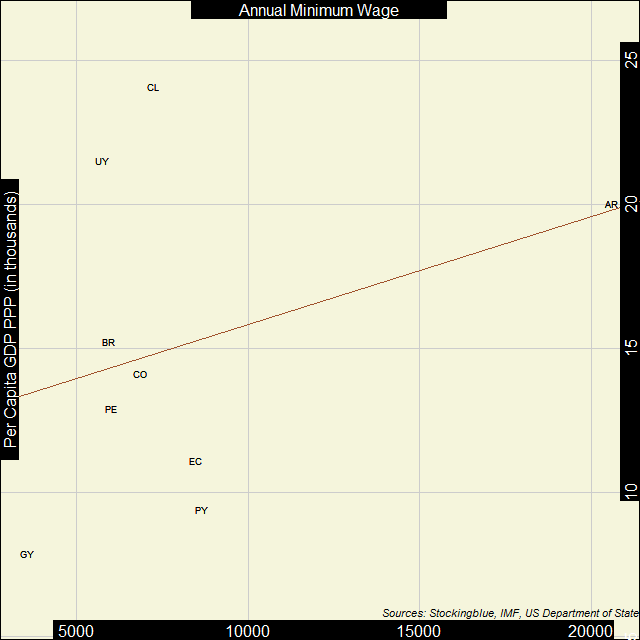
In South America, the correlation between economic strength and minimum wage is very weak. Every country studied on the continent - excluding Guyana - has an annual minimum wage of at least 5,000 international dollars.
The Correlation between Shadow Economies and Economic Strength in South America
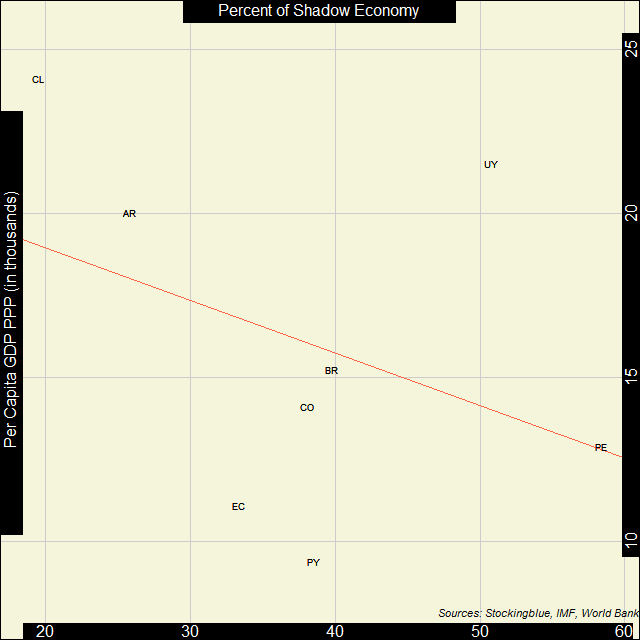
In South America, the correlation between economic strength and the strength of the shadow economy is pretty weak. Every country studied on the continent, excluding Chile, has a shadow economy that takes up at least one-fifth of its overall economy.